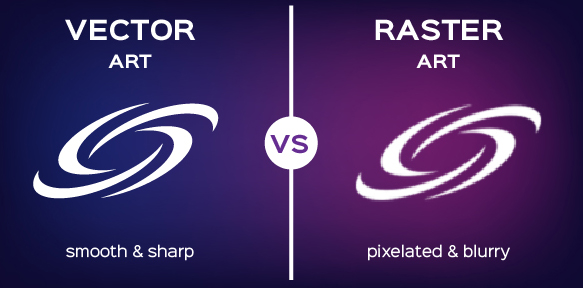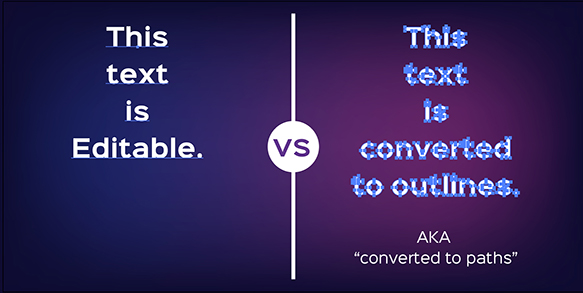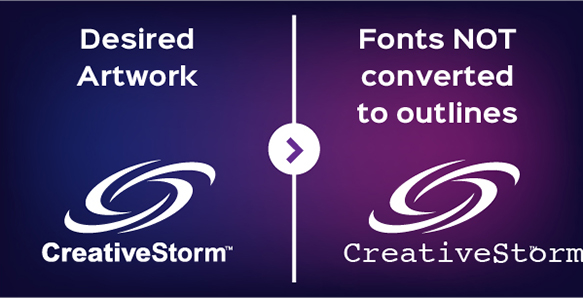Why do we need your logo or artwork as a vector file?
- Vector files use a series of paths to define an image. Unlike raster files such as JPEGs or GIFs, which use pixels to make up an image.
- Vector files provide flexibility for manipulation and can be resized smaller or infinitely larger while lines and edges remain smooth and sharp...without loss of image quality. Unlike raster graphics such as JPEGs, BMPs or GIFs, which become pixelated and blurry when resized.
What are common vector file formats?
- AI (Adobe Illustrator)
- EPS (Encapsulated PostScript)
- SVG (Scalable Vector Graphic)
We can't use the following raster or bitmap file formats:
- JPEG (Joint Photographic Experts Group) or JPG
- BMP (Bitmap)
- GIF (Graphics Interchange Format)
- PDF - (Portable Document Format) *This does sometimes work on rare occasions.
Why can't we use raster or bitmap formats?
- We care about your business! We take pride in ensuring quality. Vector file formats will give your project the best result!
- If we try to scale or enlarge a non-vector format, the image will become pixelated, blurry and have jagged edges when printed.
What does it mean to convert your fonts to "outlines?"
Converting or saving fonts to outlines (or paths) is a commonly used printing production term.
If you send your completed artwork to us but do not first convert the fonts within the design to outlines problems can arise. When we open your files, we very often will not own the particular typeface you used within your design and the fonts default to a font that you did not specify and your design will not have the desired look you wanted.
Converting to outlines basically locks down the fonts in your design by actually converting them from editable text to artwork.


